Content
Published:
This is an archived release.
Environment an issue in consultations on physical planning
The environment is used as an argument in 42 per cent of the objections raised against municipal comprehensive plans and local development plans out for consultation. Dispensations for new buildings in areas for agricultural, nature and outdoor activities are increasing.
| Unit | 2013 | Changes in per cent | ||
|---|---|---|---|---|
| Change from last year | 2006 - 2013 | |||
| Excemptions for new buildings in agricultural areas, areas of natural environment and outdoor recreation areas | Number | 2 008 | 34.2 | 7.2 |
| Processing time for building applications | Calendar days | 36 | 2.8 | 12.5 |
| Gross operating expenses within land use planning in the municipalities | NOK per capita | 723 | 3.3 | 56.1 |
| Gross operating expenses in local and regional development, area and nature, county council districts | NOK per capita | 188 | 1.1 | -17.5 |
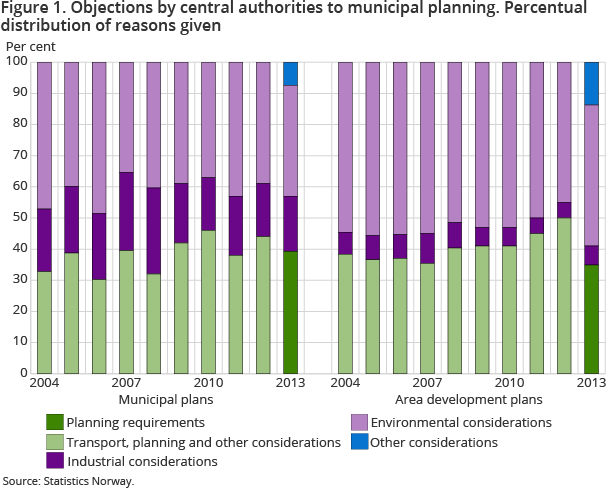
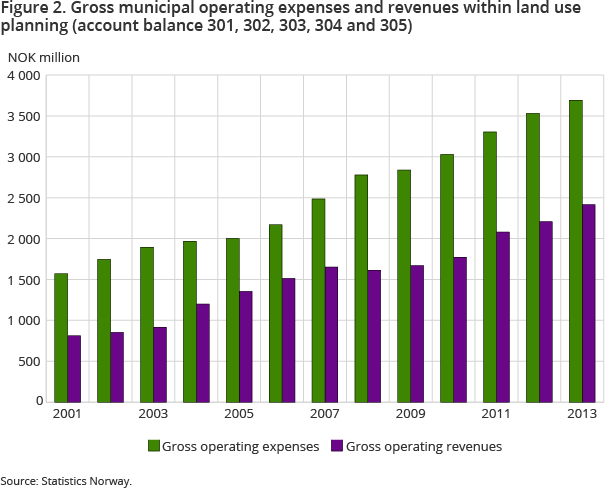
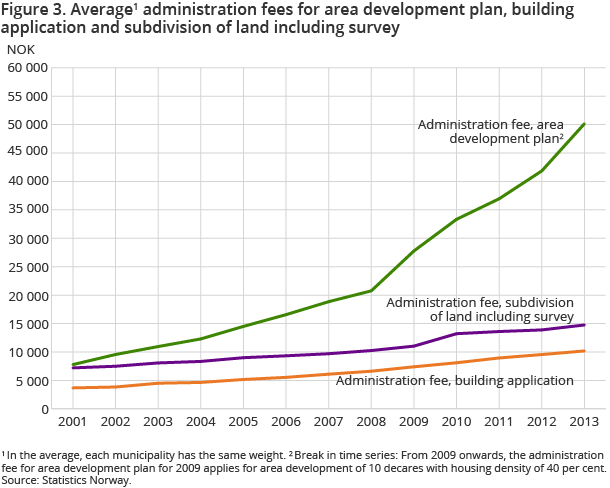
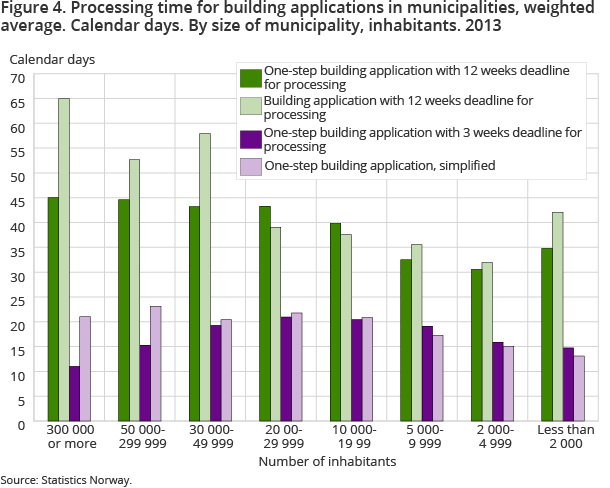
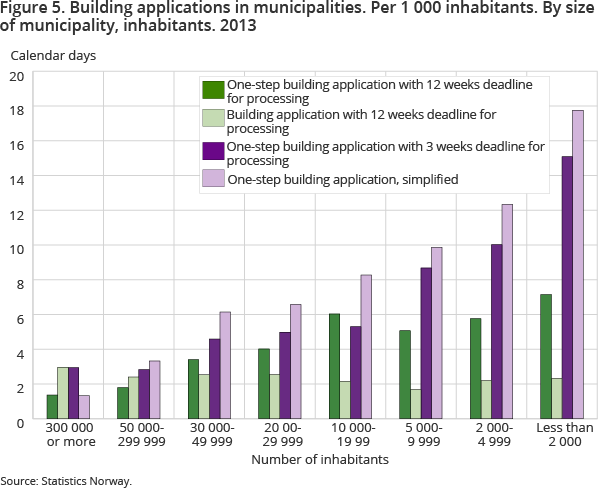
Reporting in KOSTRA on physical planning in municipalities and counties for 2013 also showed that the number of inspections of construction activity where no planning application had been made dropped by 30 per cent compared with 2012. The number of police reports regarding construction activity was 21, which is 4 more than the year before.
Objections to plans mostly due to environmental issues
Norwegian municipalities have a vital impact on the protection and management of the environment through the administration of the Planning and Building Act. In order to safeguard national interests, other public authorities may object to municipal plans if they are in conflict with national or other vital interests.
Public authorities used environmental issues as an argument in 42 per cent of their objections to municipal plans circulated for consultation in 2013. Non-compliance with standard requirements in plan content was used as an argument in 36 per cent of the objections. Business interests and other issues accounted for the remainder.
KOSTRA does not contain information on the results of these objections. The municipalities may either comply or negotiate with the objecting authority, or a final decision is taken by the Ministry of the Environment.
More buildings in areas for agricultural, nature and outdoor activities
In areas set aside for agricultural, nature and outdoor activities, 3 300 permits were granted for new buildings in compliance with the municipal plans. This is 500 more than the previous year. In addition, 2 000 dispensations were granted for new buildings in these kind of areas, which is an increase of 34 per cent. Dispensations for new buildings along waterways were given in 440 instances. For the coastal shore zone, the number of dispensations was 950.
Increasing expenses and revenues in land use planning
In 2013, gross expenses for land use planning amounted to NOK 3.7 billion. The municipalities’ gross income covered NOK 2.4 billion of these expenses. From 2012, gross expenses rose by 4.5 per cent, while the gross income increased by 9.4 per cent.
Administration fees also continue to increase. The average fees for private area development plans, building applications and subdivision of land including survey increased last year by 20, 7 and 6 per cent respectively.
The average processing time for area development plans, building applications and subdivision of land was 230, 36 and 67 calendar days respectively. Compared with 2012, this is an 18 per cent drop in processing time for area development plans. Processing times for building applications and subdivision of land are quite stable. However, these figures are uncertain.
Find more figures
Find detailed figures from Town and country planning in municipalities and county authorities
Contact
-
Ingeborg Hauge
E-mail: ingeborg.hauge@ssb.no
tel.: (+47) 95 87 66 56
-
Jørn Kristian Undelstvedt
E-mail: jorn.kristian.undelstvedt@ssb.no
tel.: (+47) 94 50 68 64
